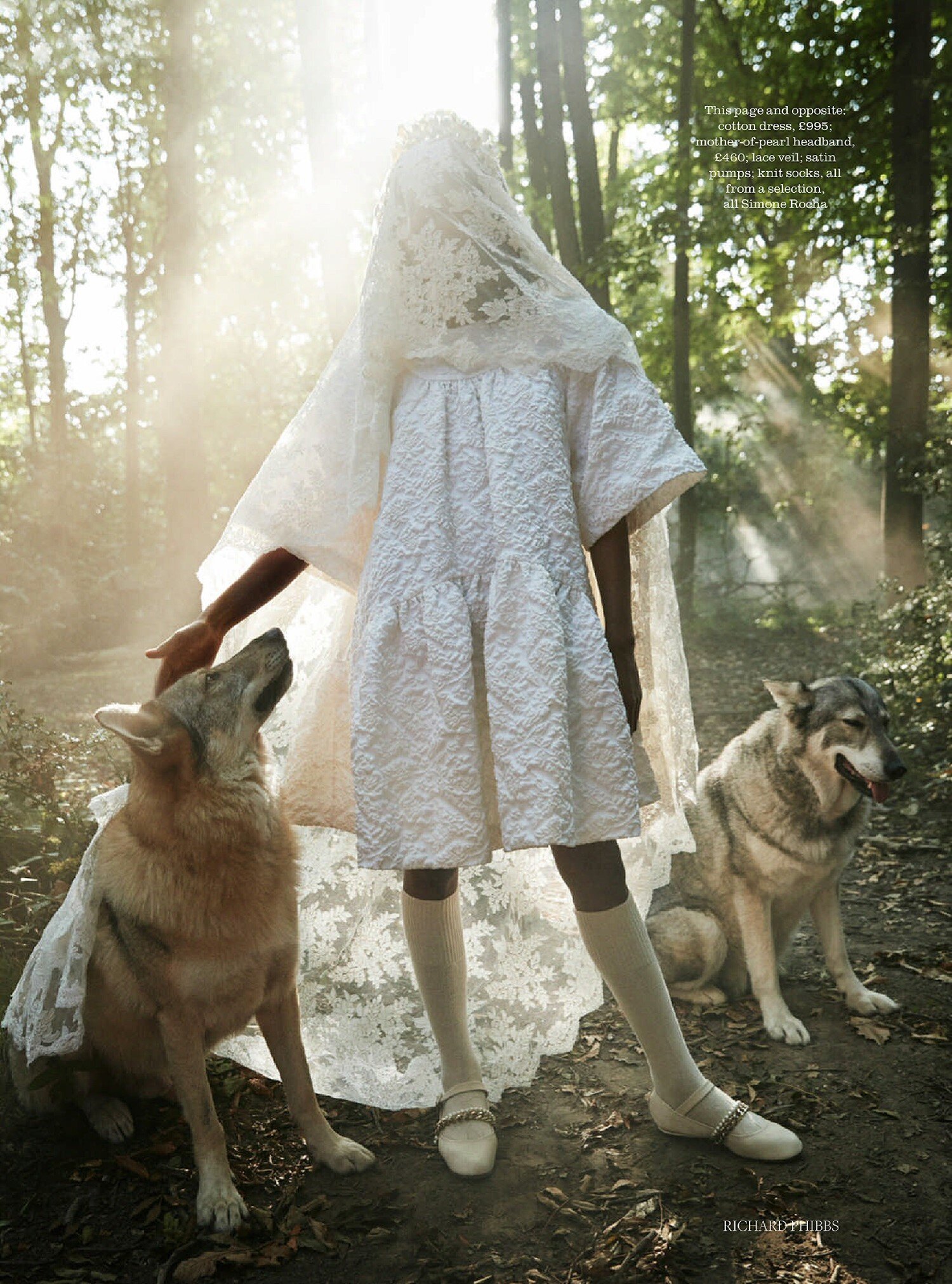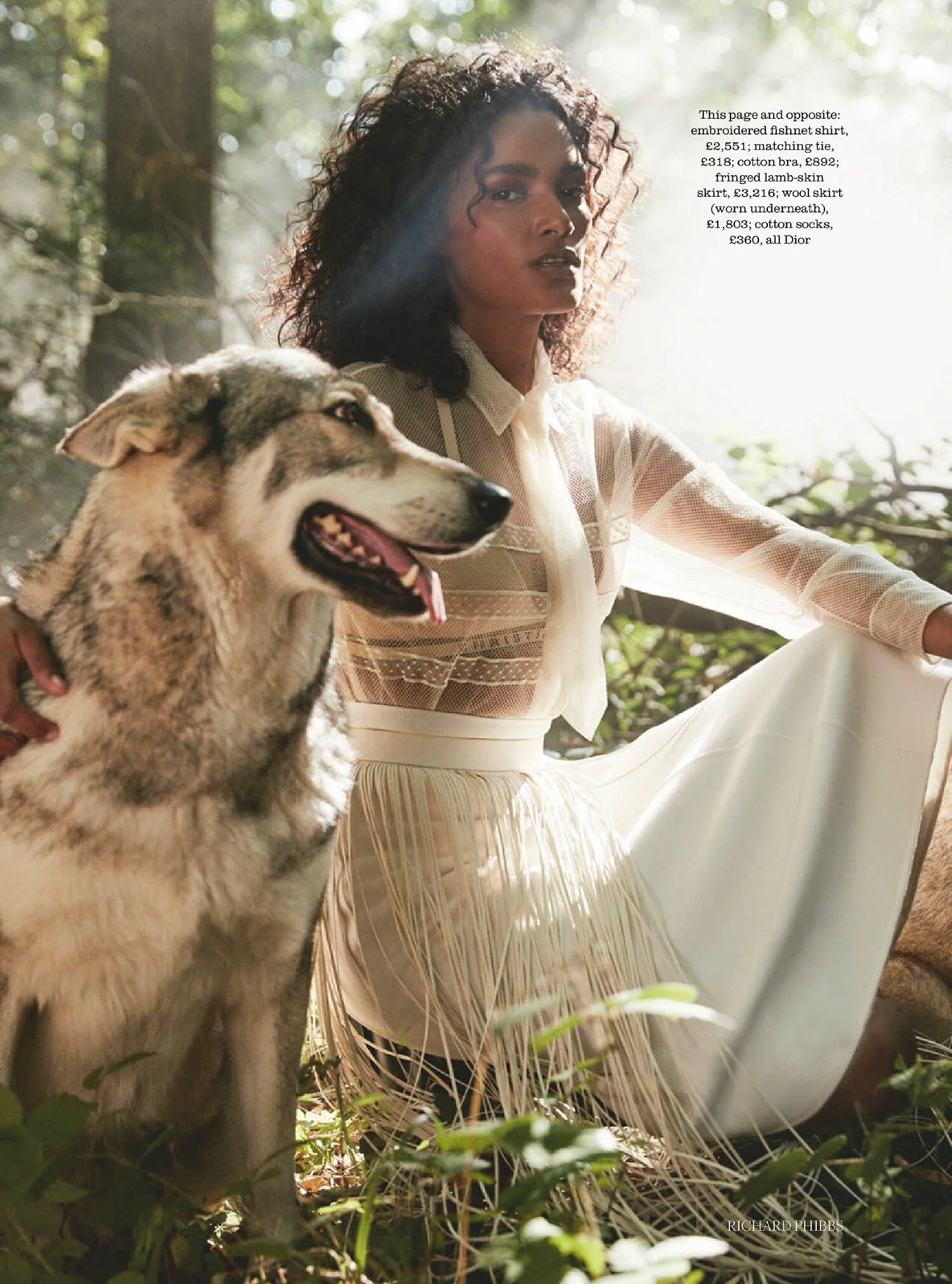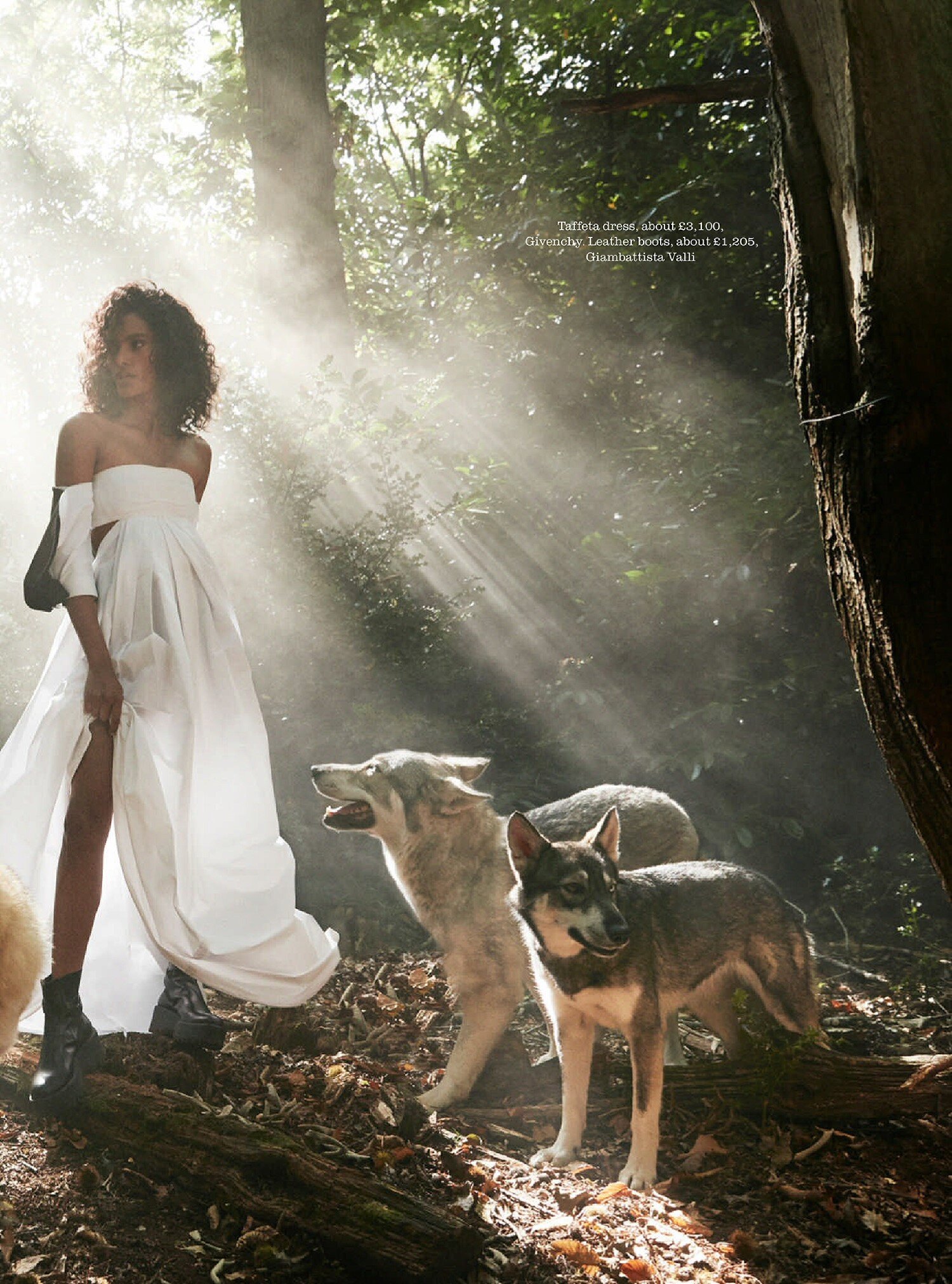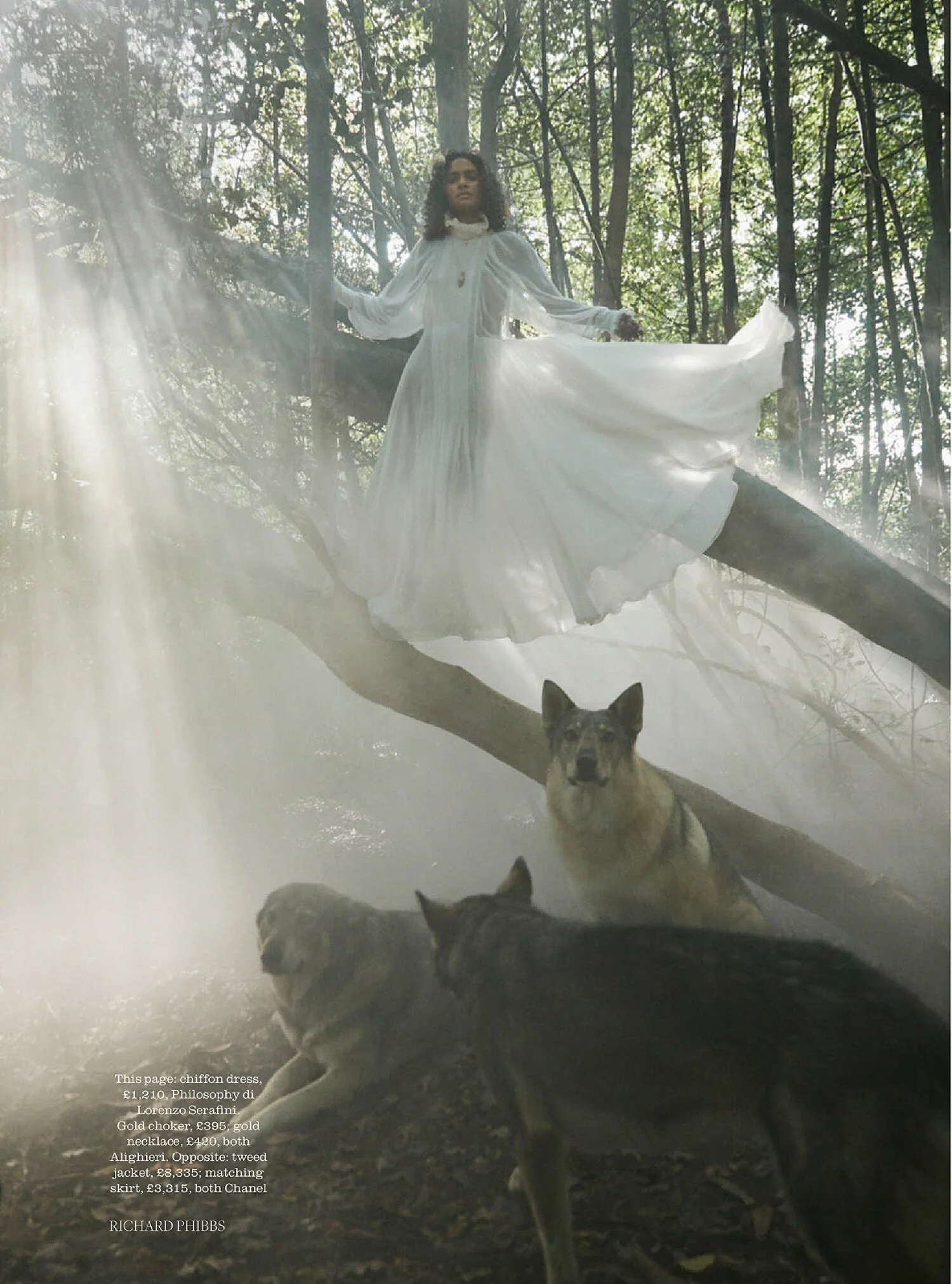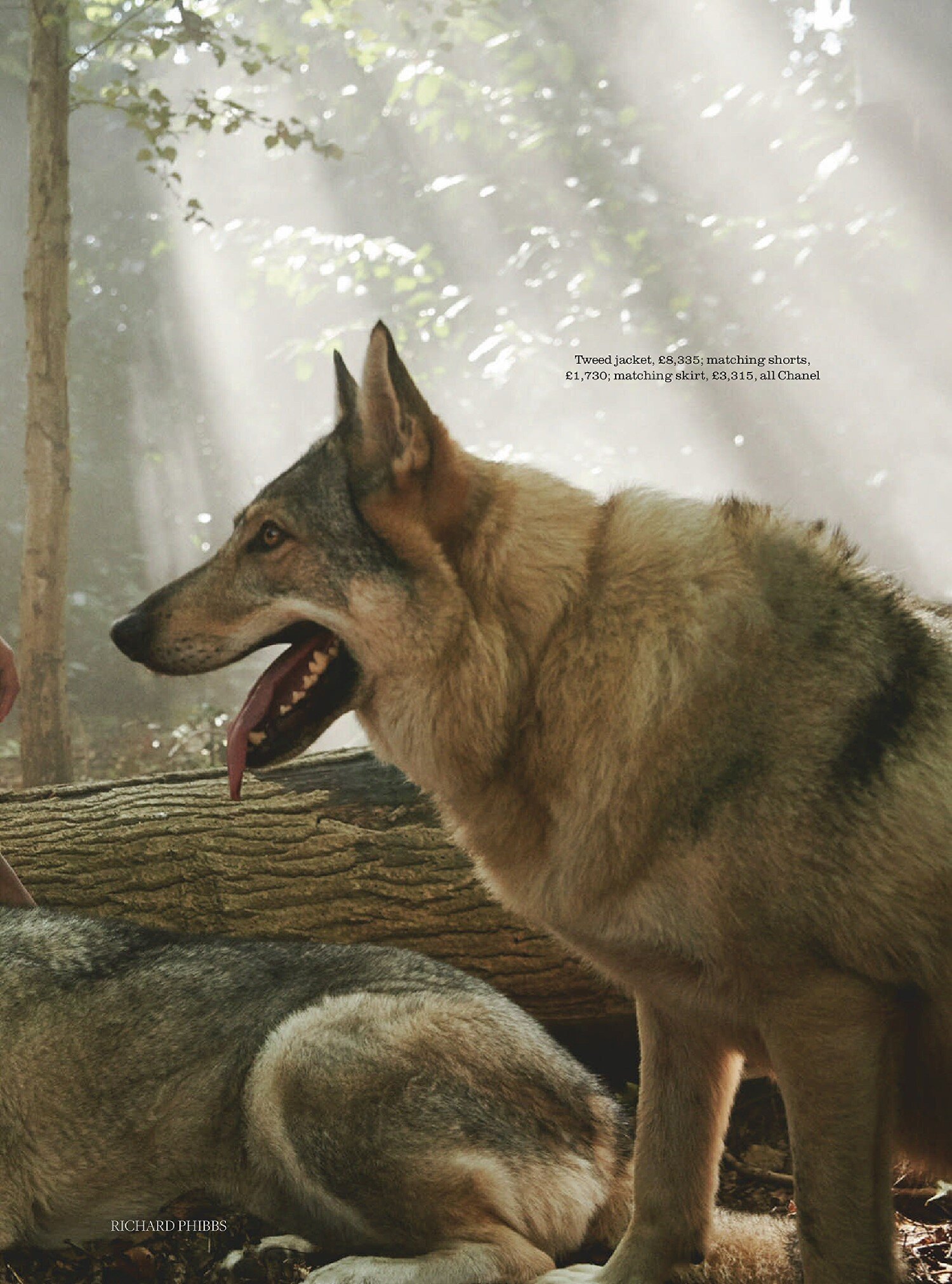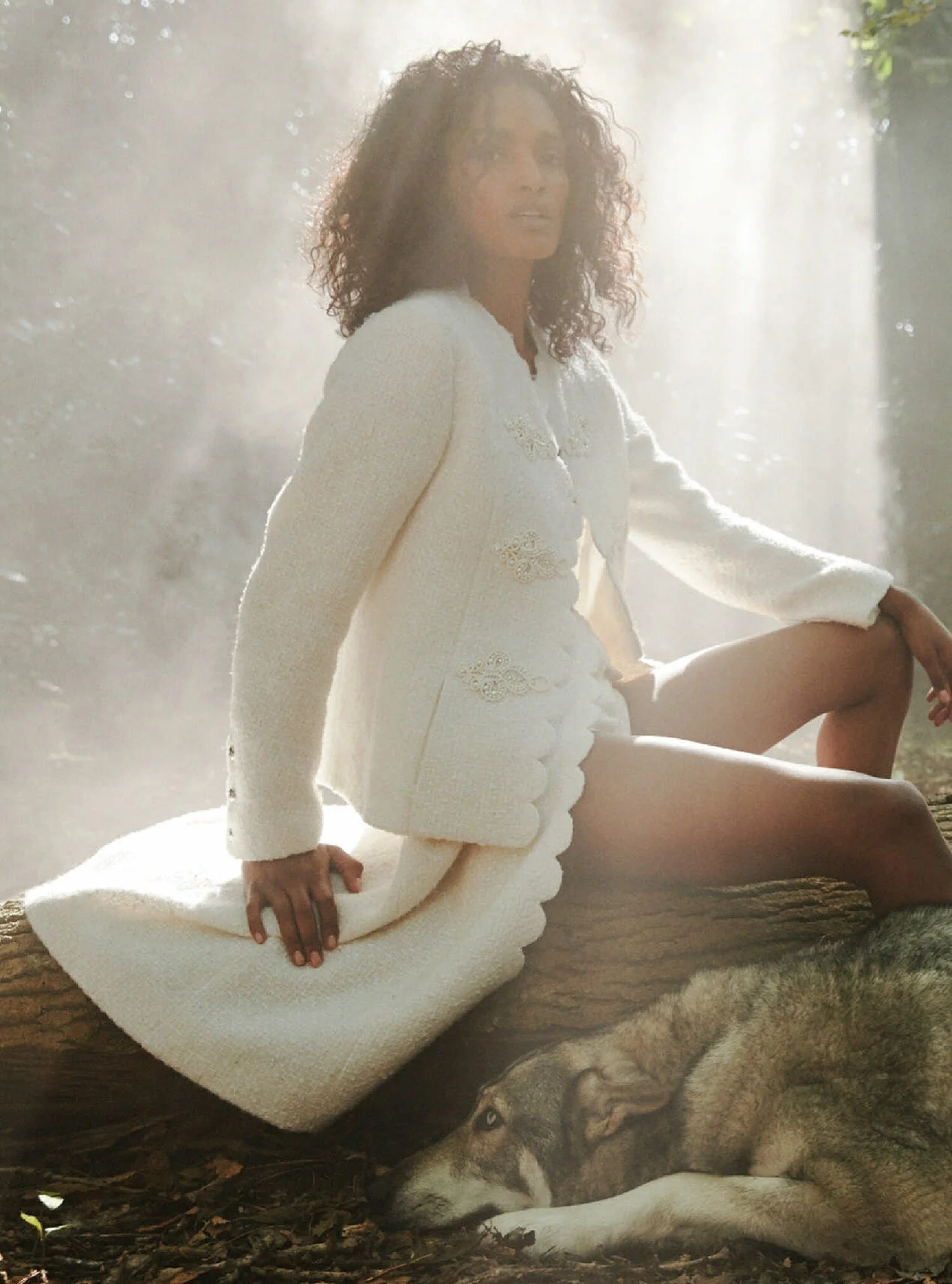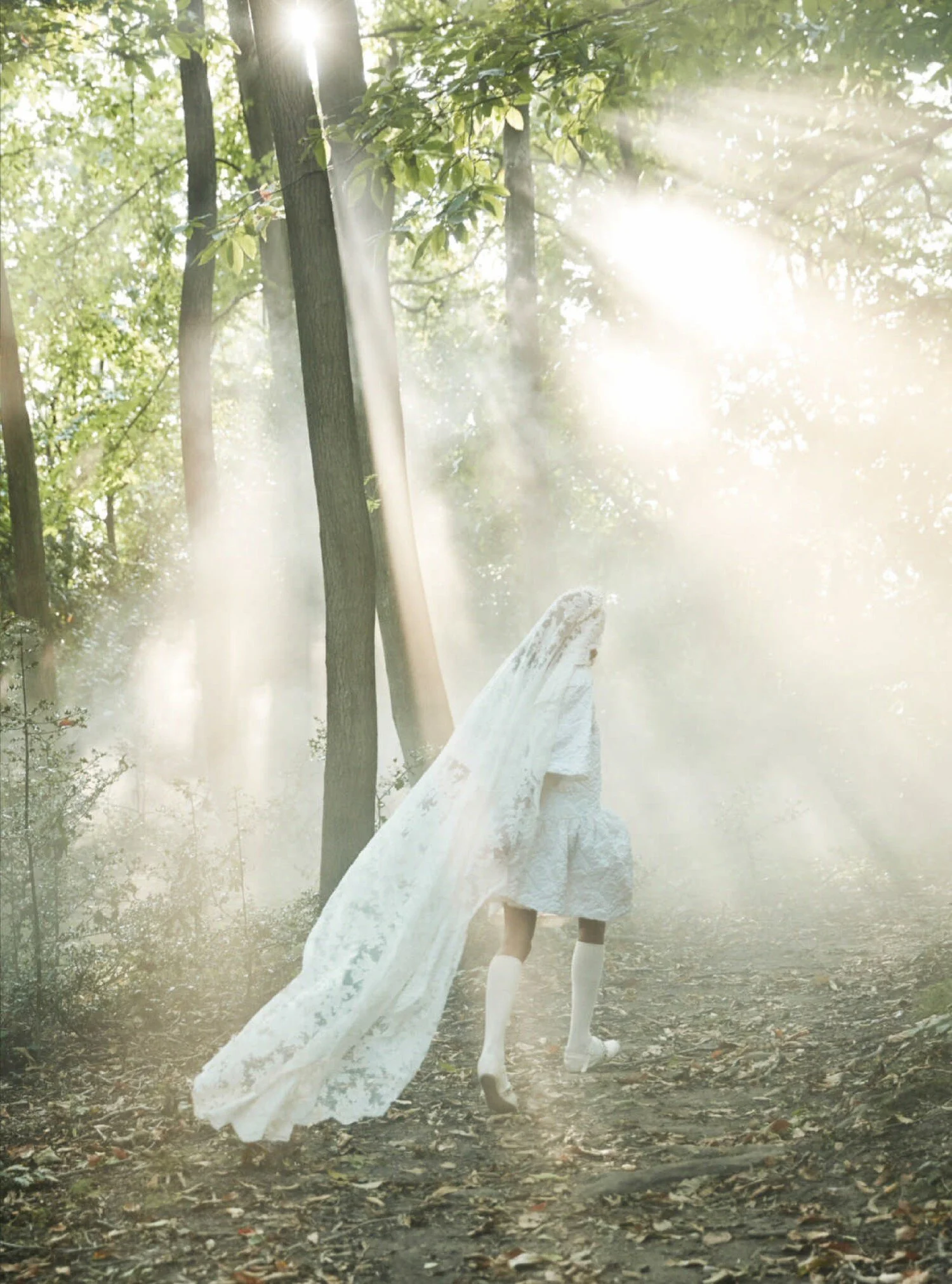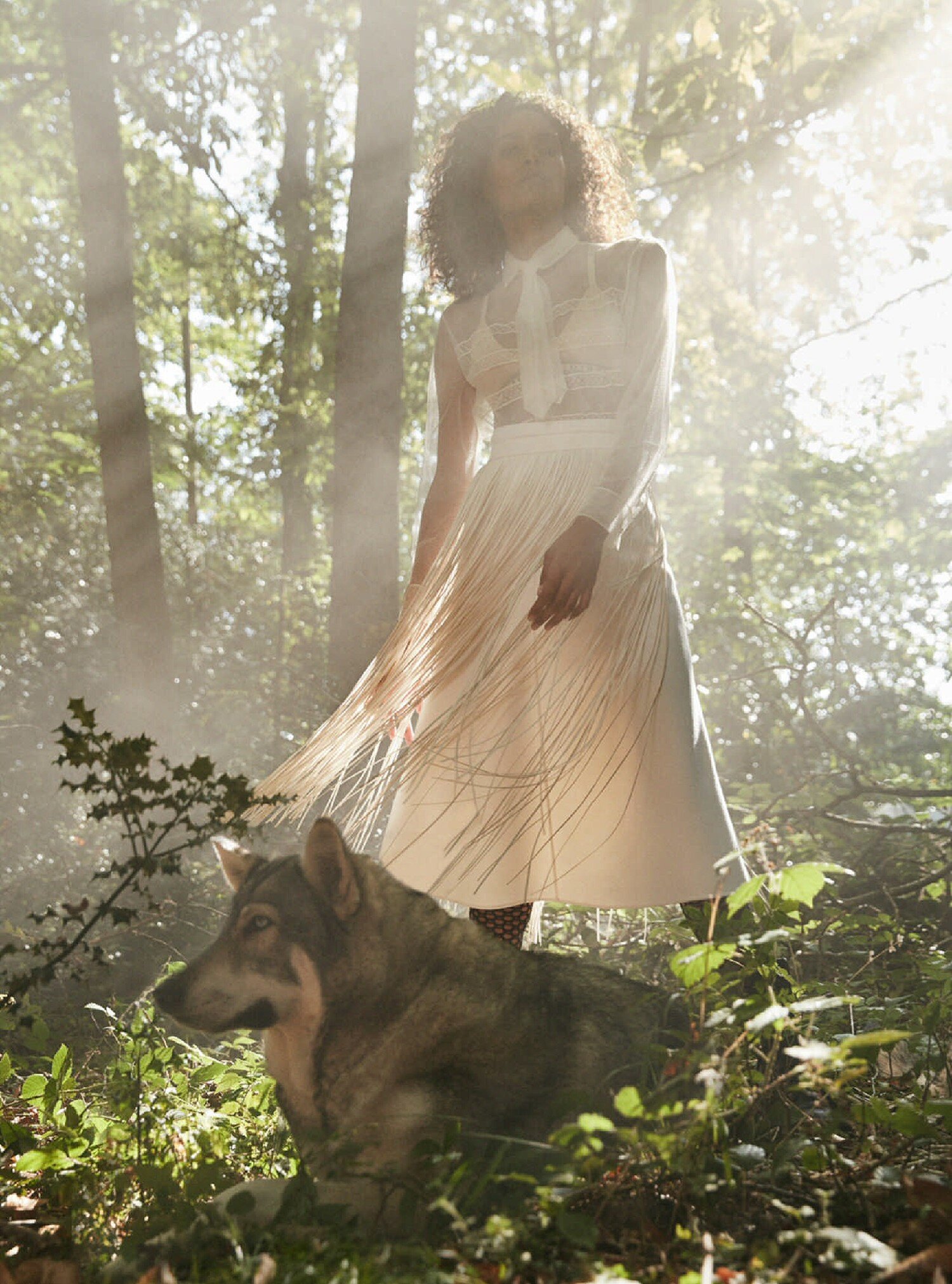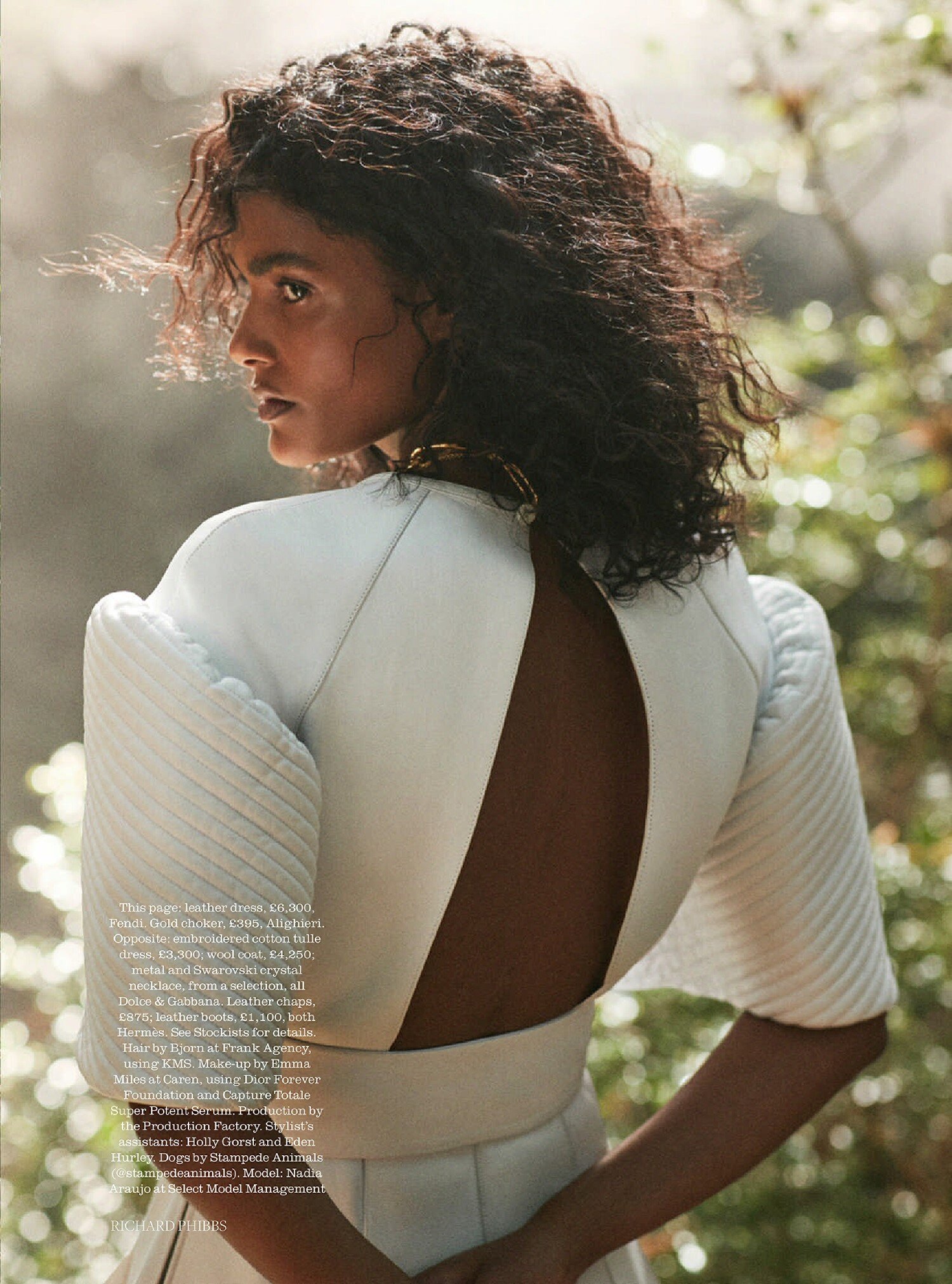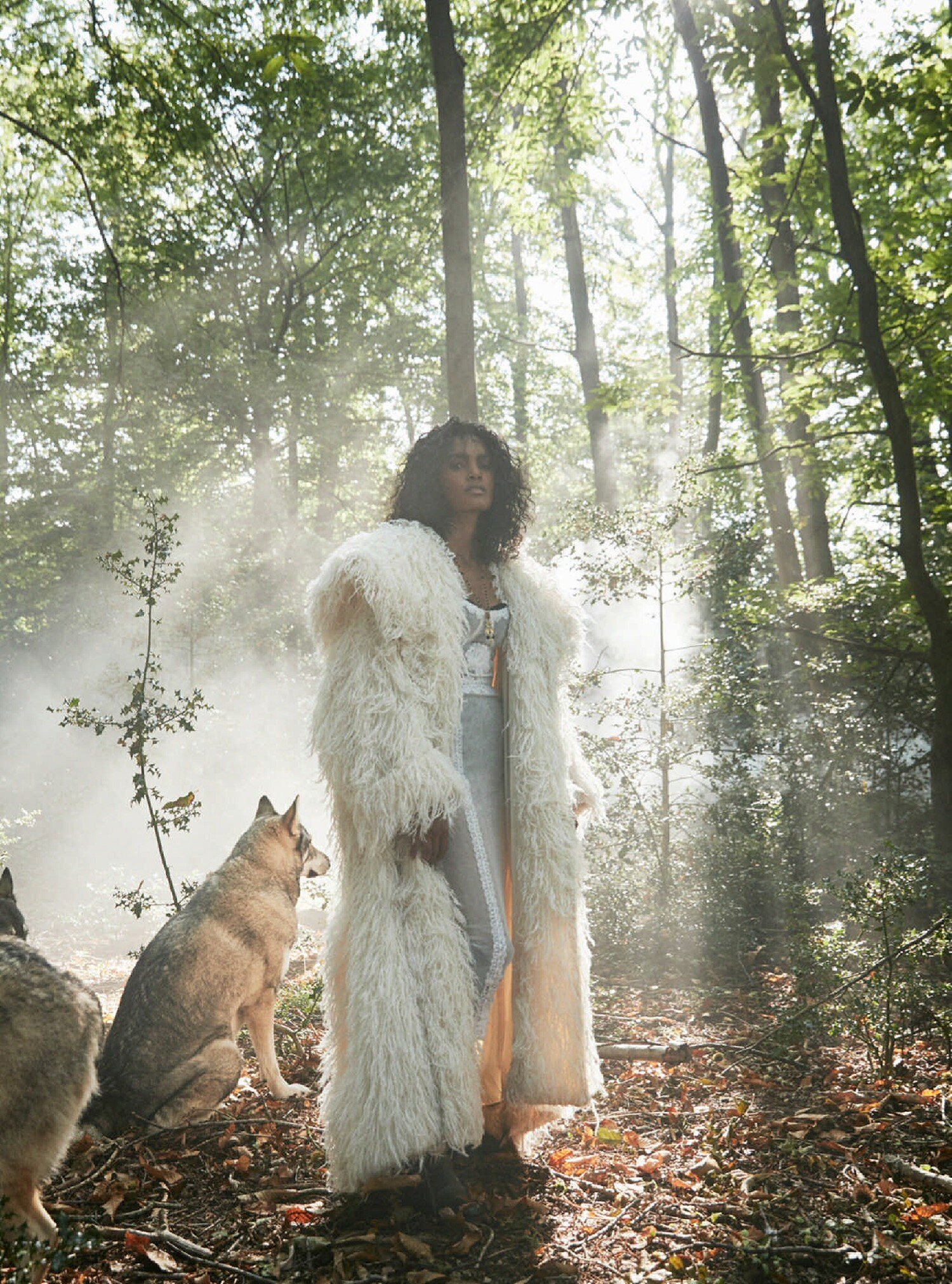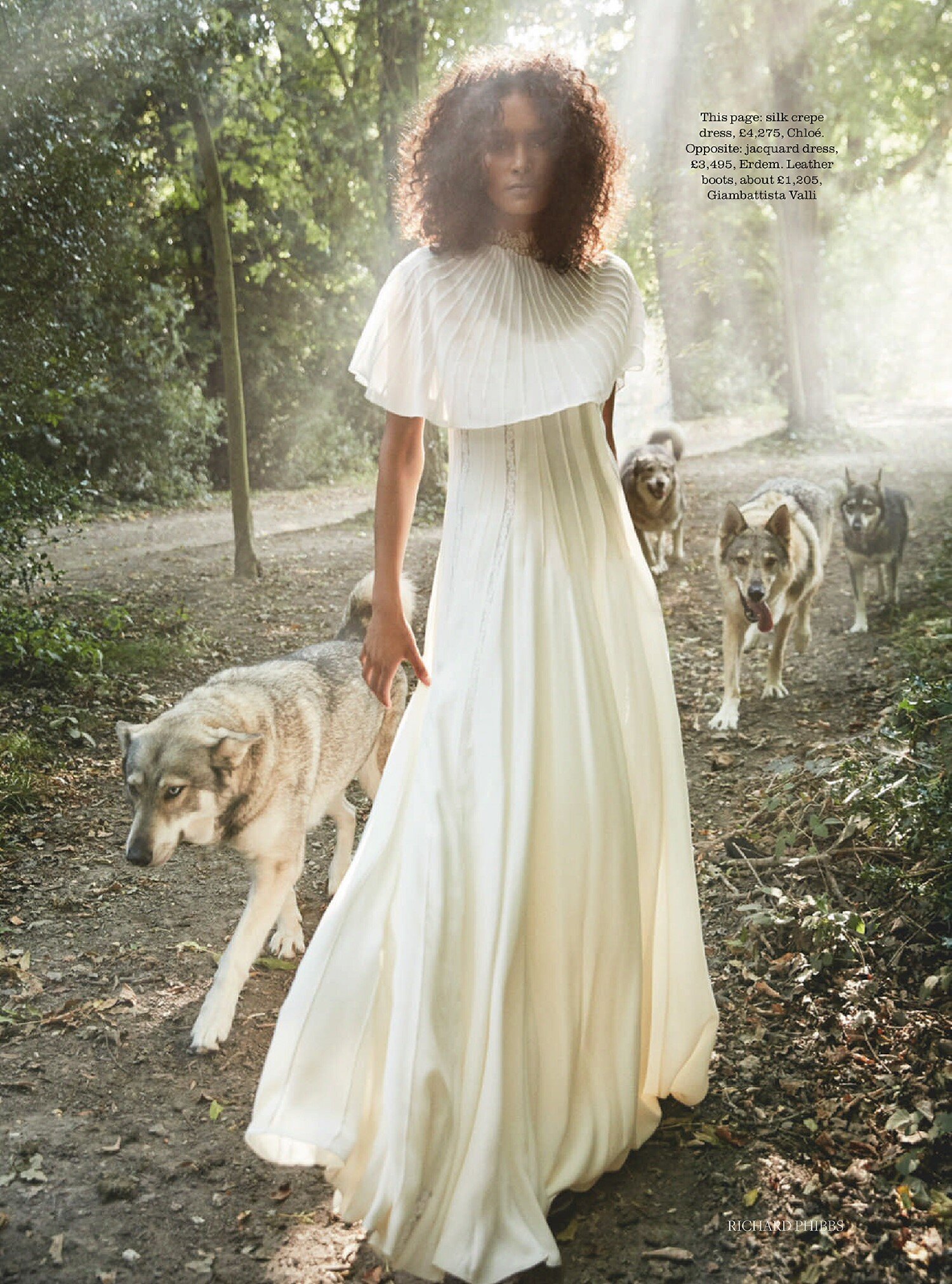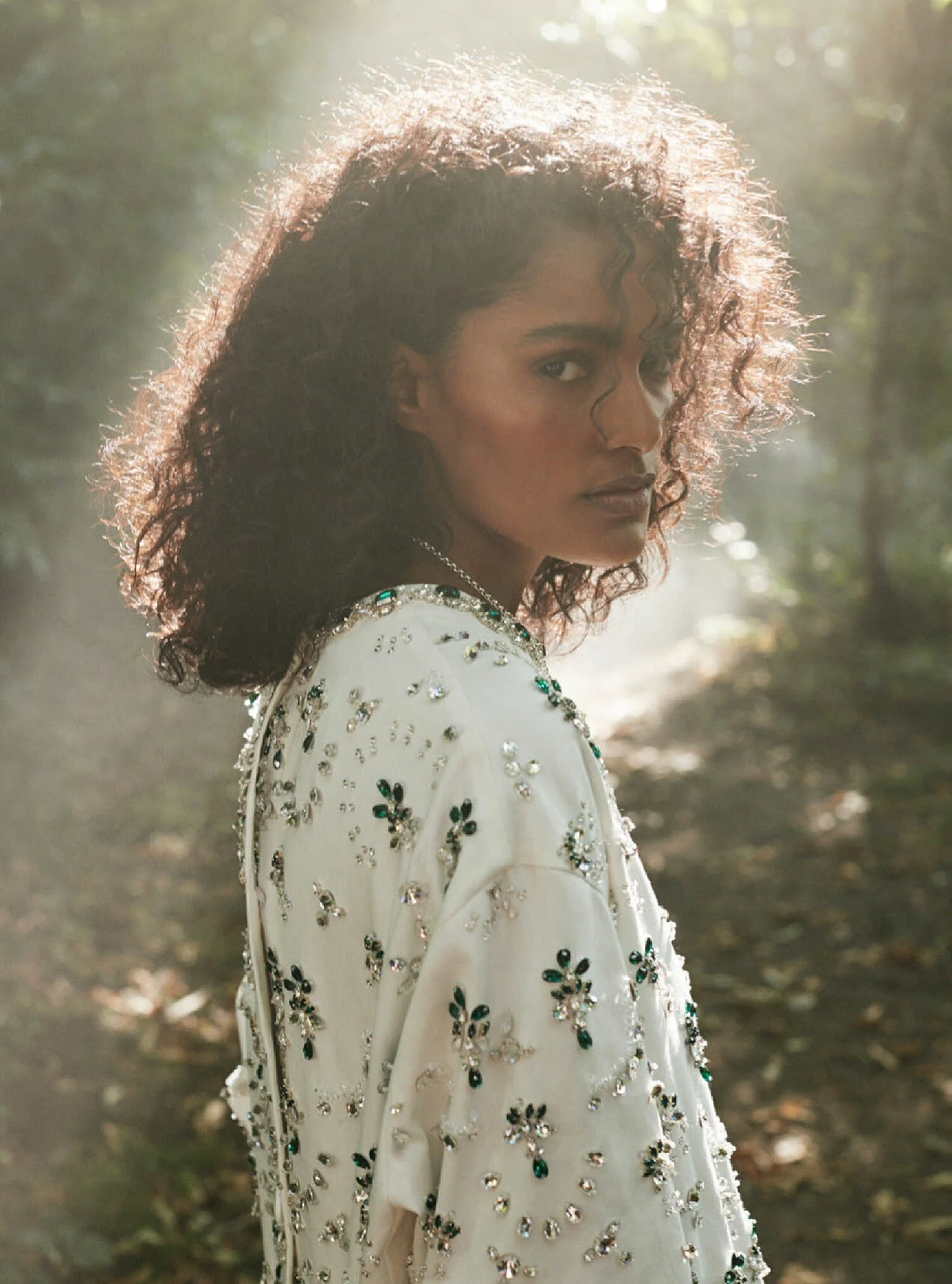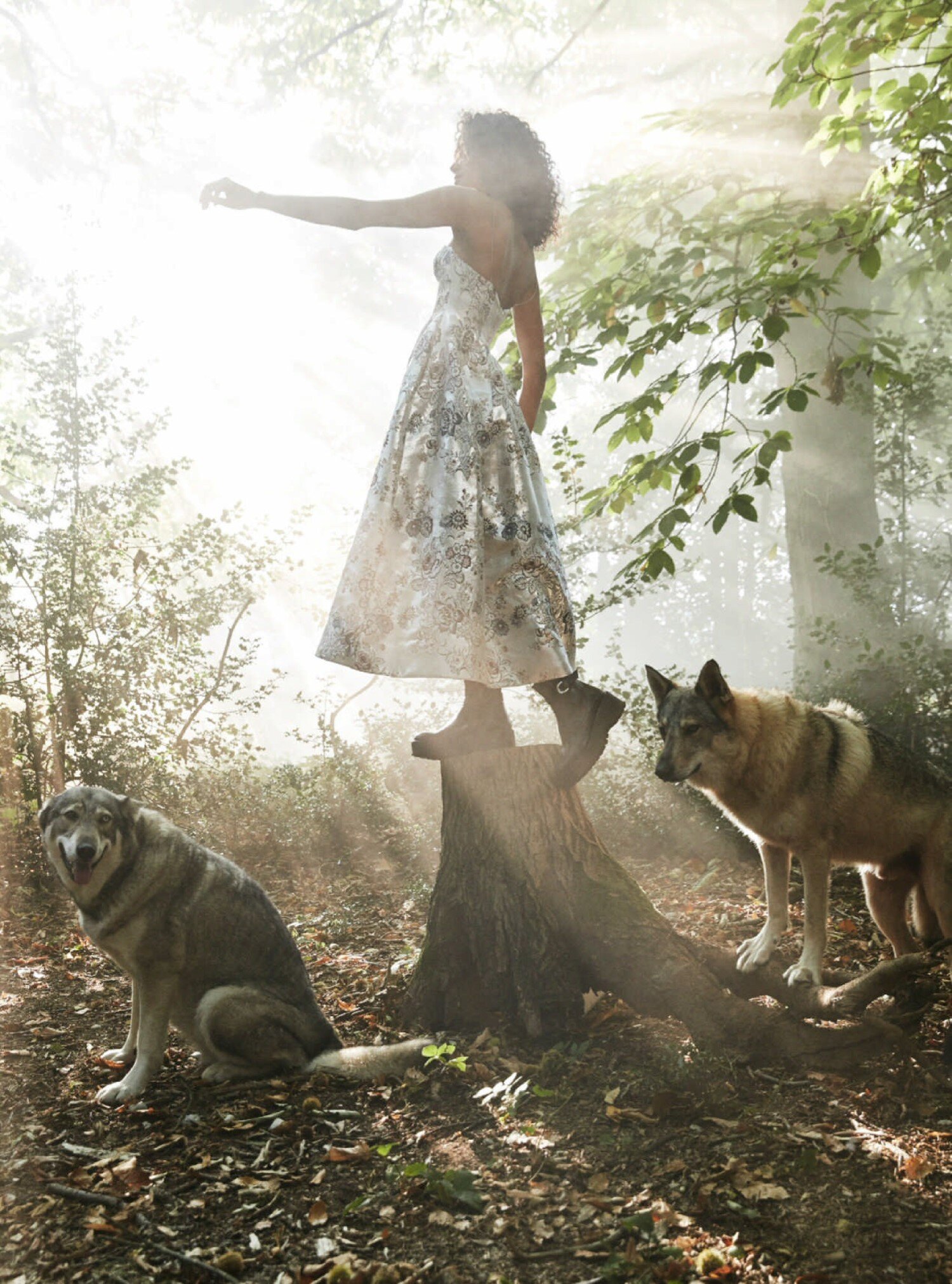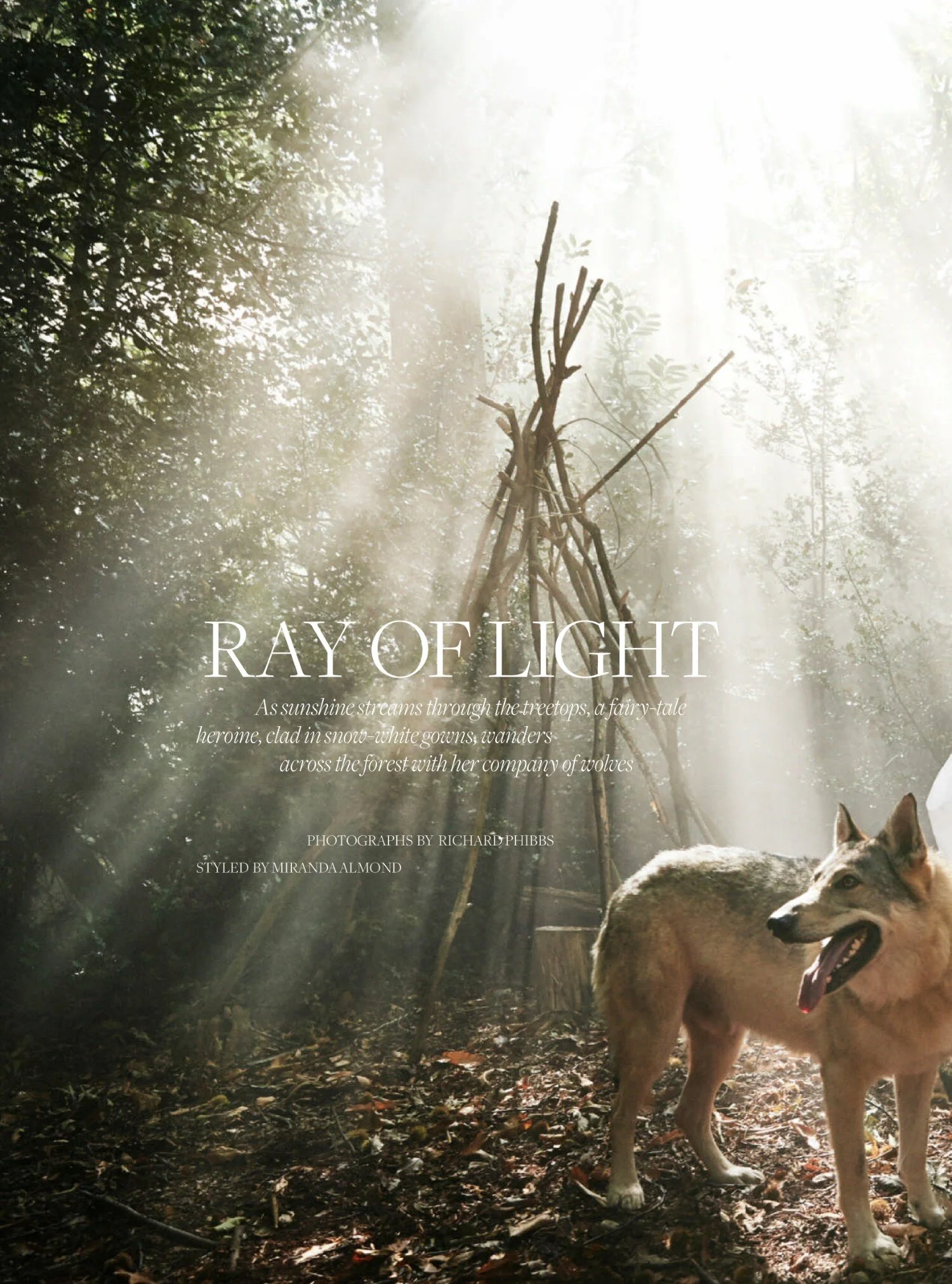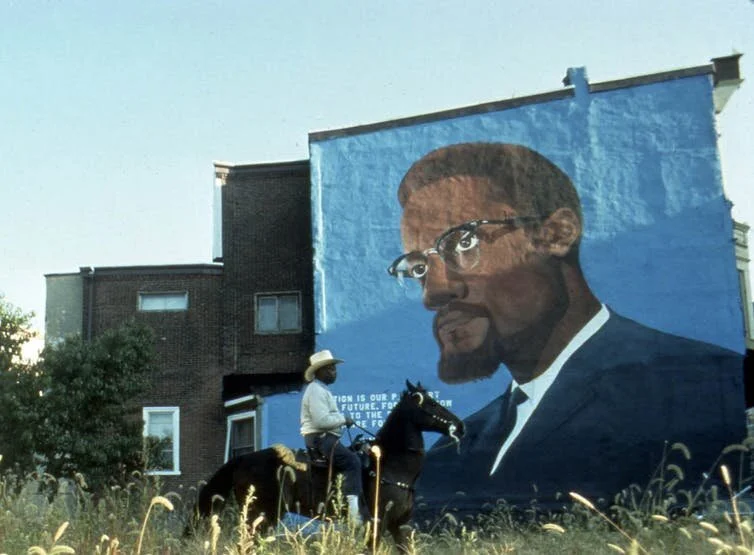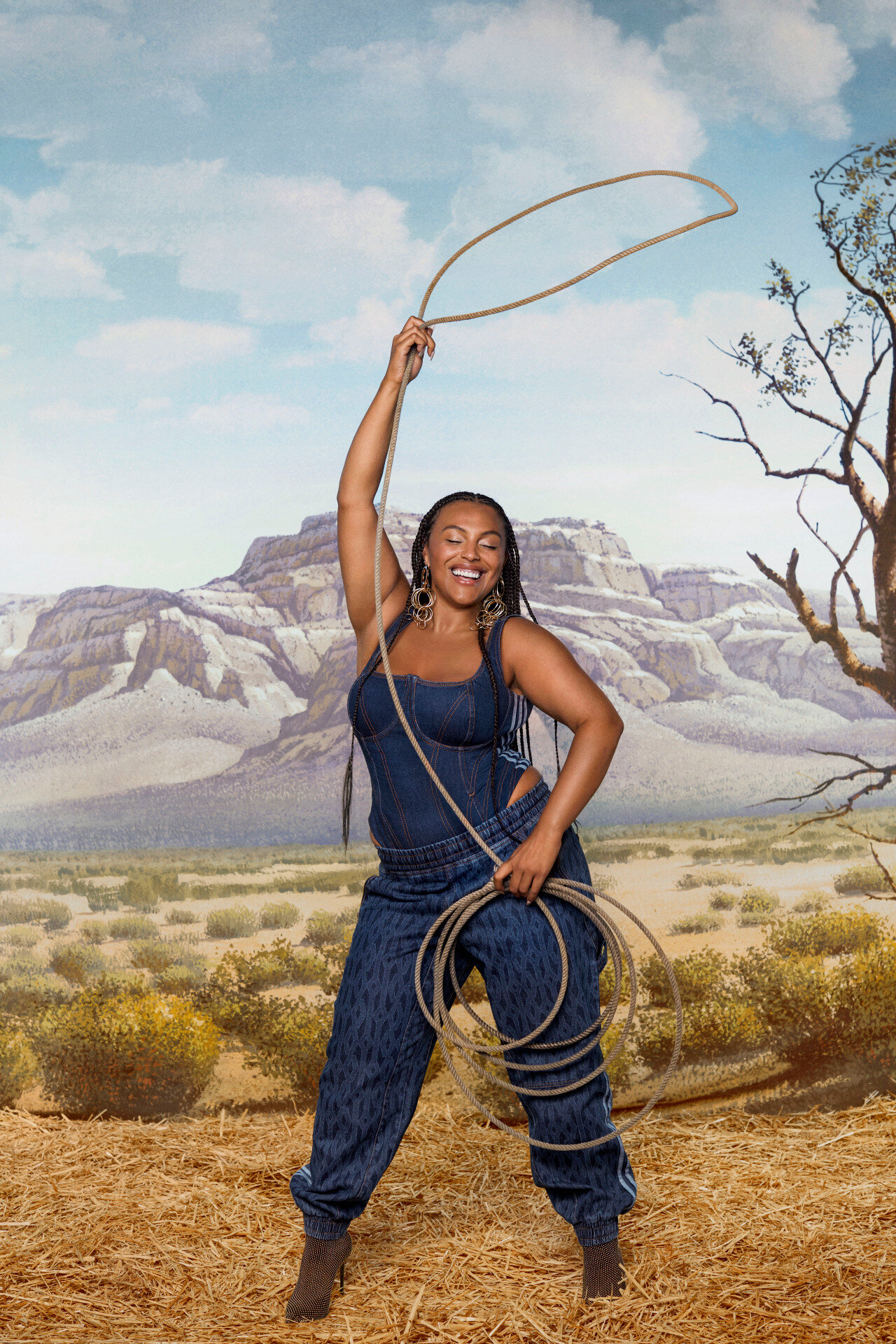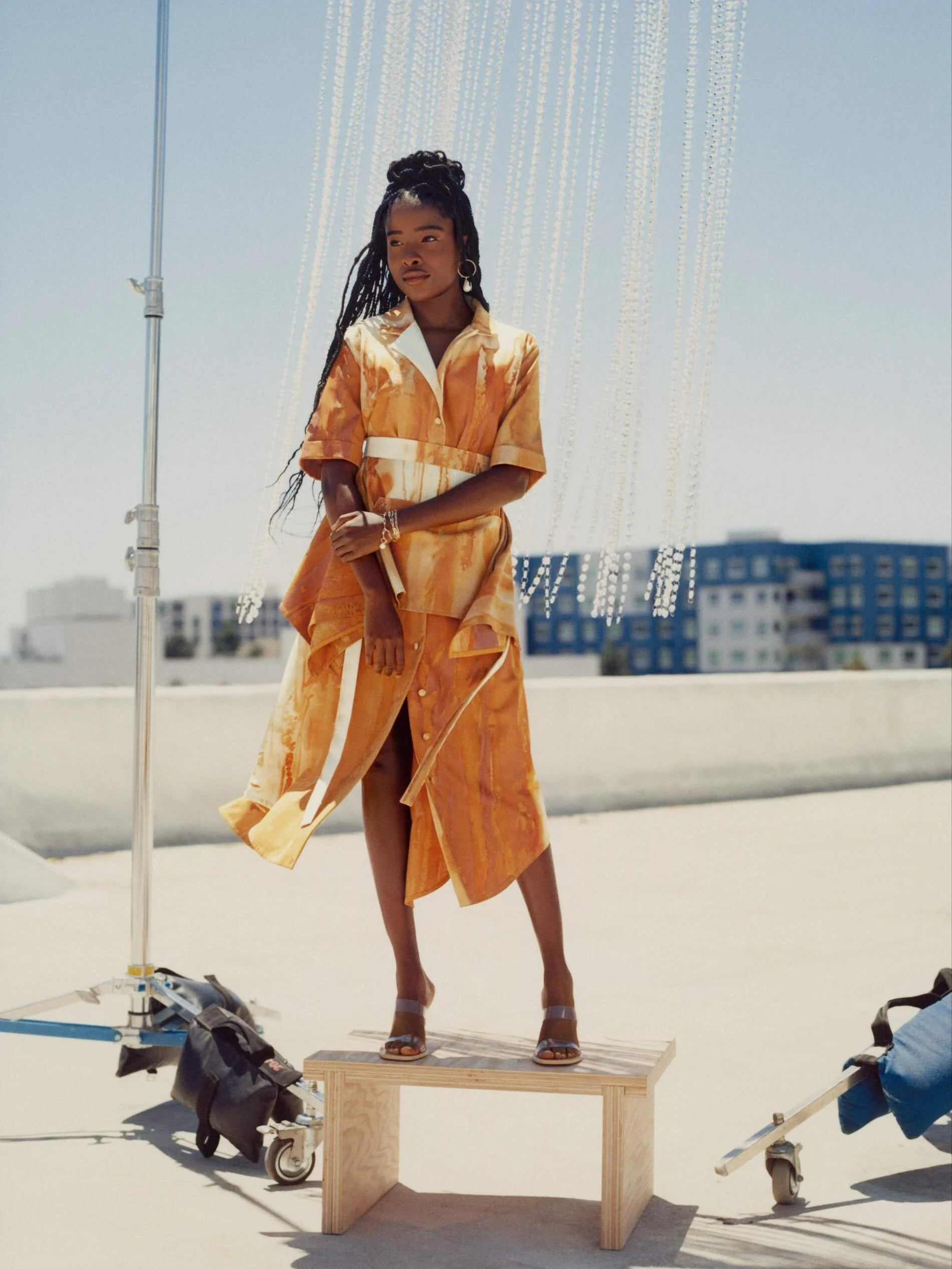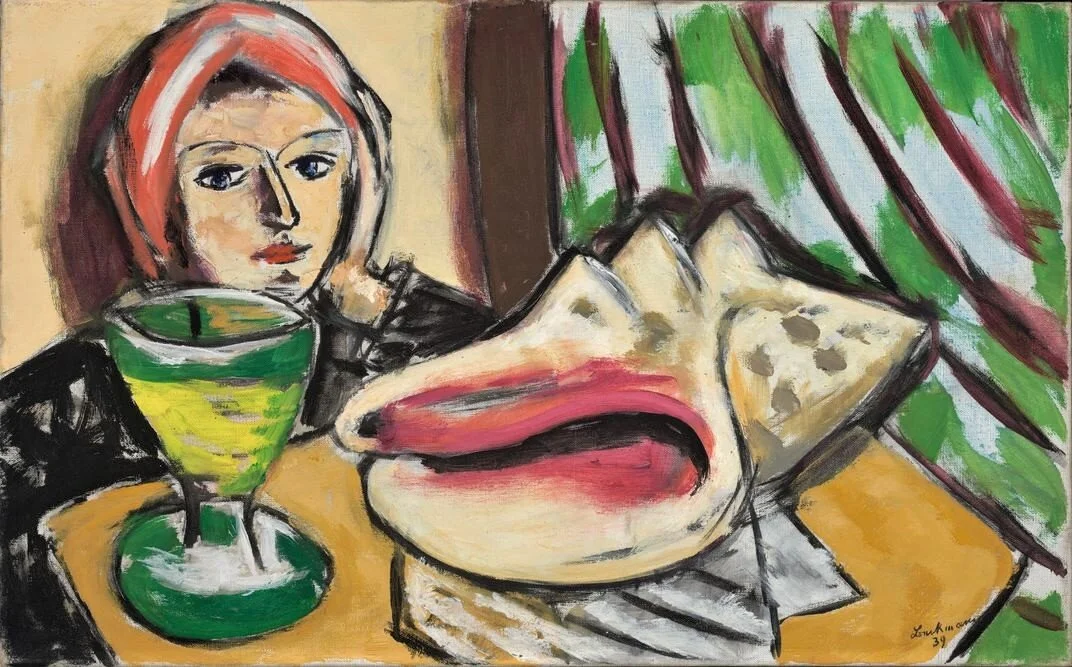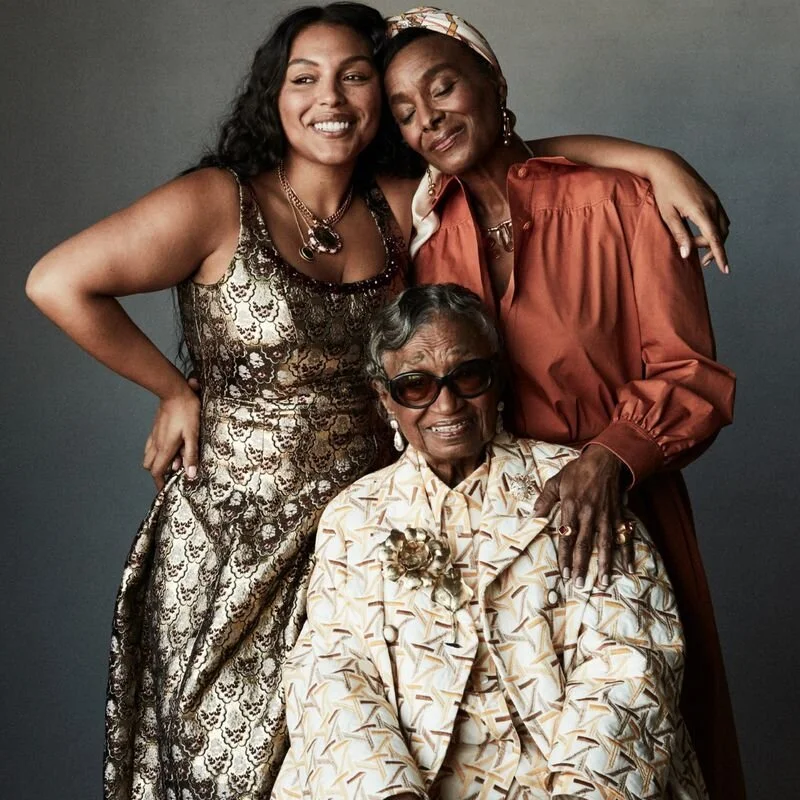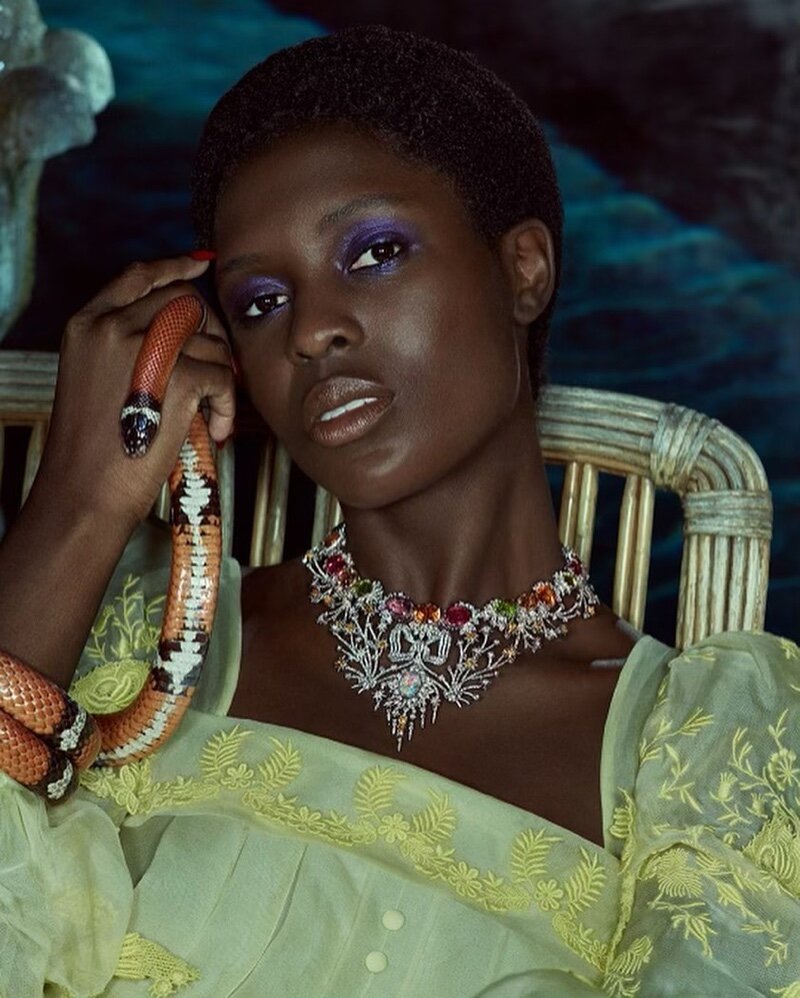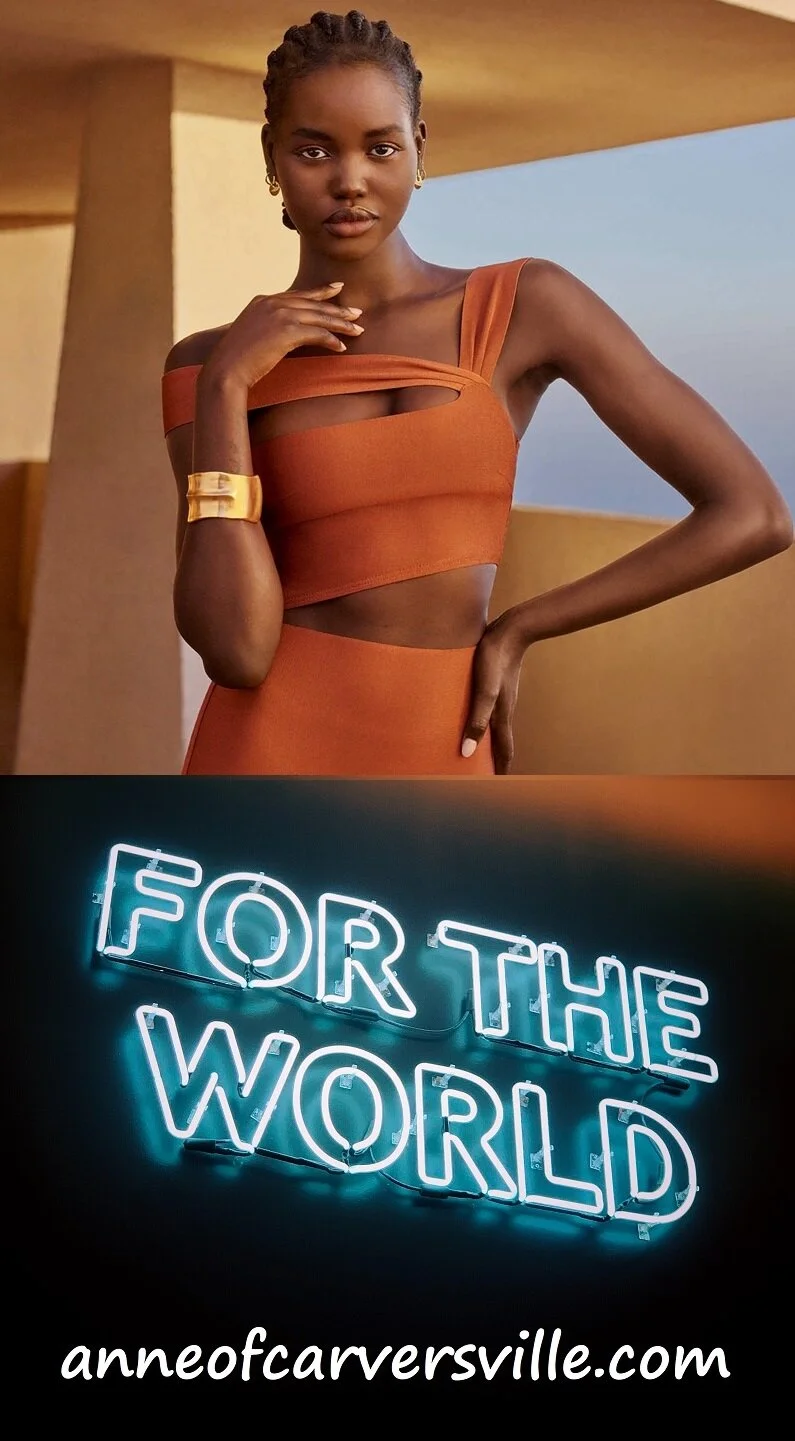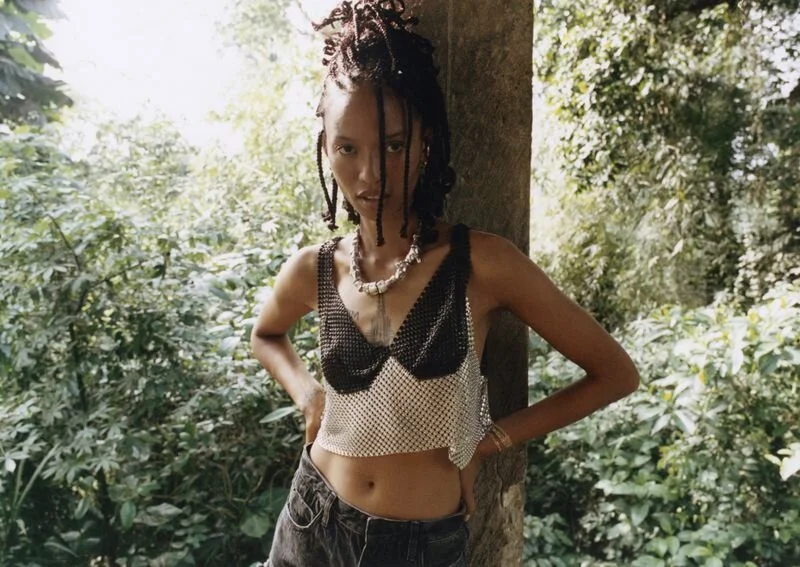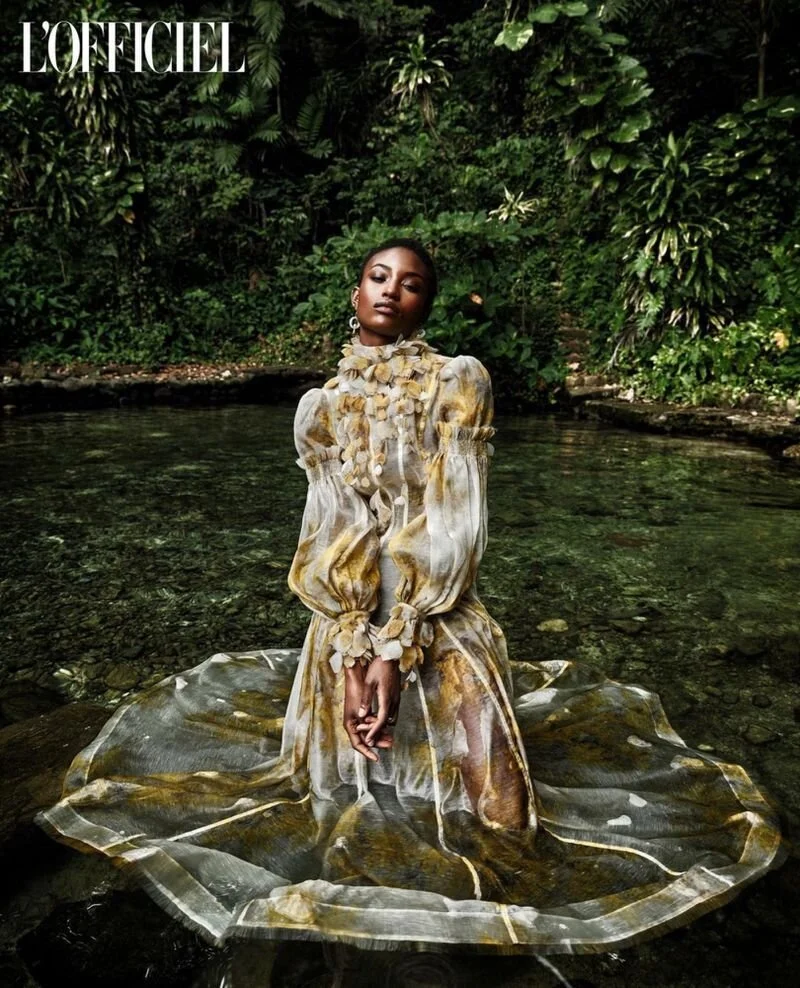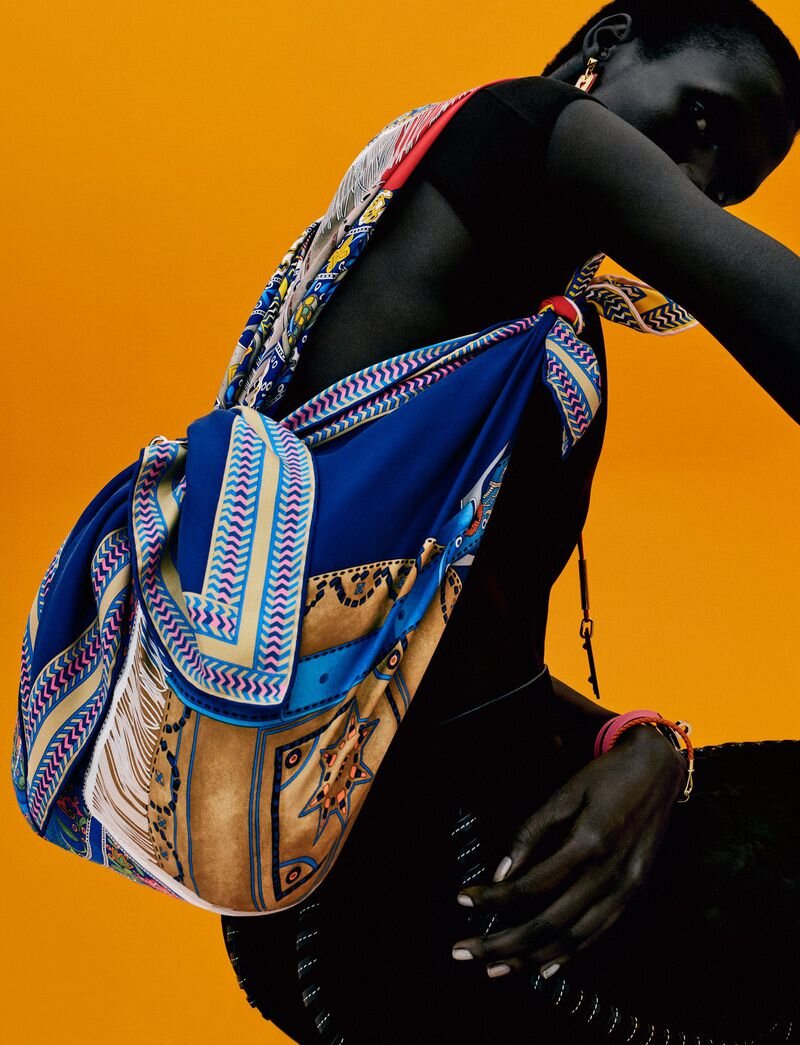Nadua Araujo & Wolves by Richard Phibbs for Town and Country UK Winter 2020
/London-bred model Nadia Araujo is styled by Miranda Almond in ‘Ray of Light’, lensed by Richard Phibbs (IG) for Town and Country UK Winter 2020./ Hair by Bjorn; makeup by Emma Miles (Note: spend 60 seconds on Richard Phibbs’ Instagram and you will see that he is deeply devoted to animal welfare.)
The fashion story channels women and wolves imagery, writing: “As sunshine streams through the treetops, a fairy-tale heroine, clad in show-white gowns, wanders across the forest with her company of wolves.”
In any overview of wolf symbolism, certain consistencies prevail. Wolf symbolism is associated with sharp intelligence and deeply instinctual understandings of life and its elements. An appetite for freedom is strongly associated with wolves, symbolism illuminated in the classic 1992 book by Clarissa Pinkola Estés ‘Women who Run with the Wolves: Myths and Stories of the Wild Woman Archetype.”
Literature written about man’s relationship with wolves seems to center around his slaughter of the animal as a symbol of Western civilization’s triumph over nature. In Western children’s stories, the wolf is big and bad — ready to devour Walt Disney’s ‘Three Little Pigs’.
Better yet, in ‘Little Red Riding Hood’, our young girl on her way to grandmother’s house meets the wolf, shares her intention and destination, only to be devoured upon her arrival by the wolf, who has already gobbled up grandma.
In Charles Perrault's version of the story (the first version to be published), Little Red tale ends here. Subsequently, a woodcutter emerges in the French version, and a hunter in the Brothers Grimm and traditional Germanic versions. Both grandma and Little Red Riding Hood are cut out of the wolf’s stomach, replaced with stones, and it’s all downhill from there. Man saves Red and grandma.
In this British Town and Country fashion story, both woman and the wolves are evolved spiritual creatures —- untainted and pure. The wolves evoke a sanctity associated with their reverence in American Indian cultures and beyond.
Nadia Araujo wears white —although wearing white in nature is symbolically an advancement, as the wildness of nature is often perceived as corrupting in its essence.
The New York Times shared a provocative piece last December titled ‘The Wild Woman Awakens’:
The 1992 feminist sensation “Women Who Run With the Wolves” has returned, as a new generation of artists embrace women’s bodies in all their hormonal, bloody glory.
These women are not brides. At least they are not chaste brides. Writing for the Times, Amanda Hess described today’s women breaking out of their confinement to run with the wolves:
A generation later, “Women Who Run With the Wolves” has returned to a culture suddenly lush with primal visions of women’s bodies — dripping with blood, coursing with hormones and pulsing with pain and arousal. Accounts of menstruation, childbirth, menopause and gender transition howl through the worlds of theater and television, memoir and art. Instagram is overgrown with images of women loping naked through the woods and giving birth in living rooms, tagged #wildwoman or #witch or #laloba, the Spanish feminine for wolf. Related consumer products abound.
The imagery is messy and full of fashion world imperfections. These wolf women are not flawless. Like Hess, we are drawn back to Estés’ perspective: “Over time, we have seen the feminine instinctive nature looted, driven back, overbuilt,” she writes. But “women’s flagging vitality can be restored by extensive ‘psychic-archeological’ digs into the ruins of the female underworld.” It is there that we might reveal “women’s deepest nature” and gain access to “the creative feminine.”
The creative feminine does then join with the divine feminine — and women in white can indeed run with the wolves. But they are deeply centered on all aspects of “wild feminine natures” and the wisdom that comes from embracing those unsanitized aspects of our reality. Wisdom and enrichment don’t come from triumphing over the “lesser” or “lower” aspects of women’s existence. Instead, wolves live and women reject menstruation huts. Sounds like a life plan to me.
